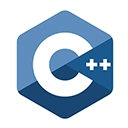In this guide, we will create a simple console-based To-Do List Application in C++. The application will allow users to add tasks, mark tasks as completed, view the list of tasks, and remove tasks. Here's a step-by-step outline and sample code to help you get started:
Step 1: Define Task Structure
Define a structure to represent a task, including its description and completion status:
#include <iostream>
#include <vector>
using namespace std;
struct Task {
string description;
bool completed;
};
Step 2: Create a Vector to Store Tasks
Create a vector to store the list of tasks:
vector<Task> taskList;
Step 3: Implement Menu and User Interface
Create a menu for users to interact with the application. Provide options to add, view, mark as complete, and remove tasks:
int main() {
char choice;
do {
cout << "To-Do List Application" << endl;
cout << "1. Add Task" << endl;
cout << "2. View Tasks" << endl;
cout << "3. Mark as Complete" << endl;
cout << "4. Remove Task" << endl;
cout << "5. Exit" << endl;
cout << "Enter your choice: ";
cin >> choice;
switch (choice) {
case '1':
// Implement task addition
break;
case '2':
// Implement task viewing
break;
case '3':
// Implement marking a task as complete
break;
case '4':
// Implement task removal
break;
case '5':
cout << "Exiting application." << endl;
break;
default:
cout << "Invalid choice. Please try again." << endl;
}
} while (choice != '5');
return 0;
}
Step 4: Implement Task Operations
Implement the logic for adding, viewing, marking as complete, and removing tasks within the respective cases of the switch statement.
Step 5: Build and Run
Compile your C++ program and run the application. You can interact with the To-Do List using the provided menu options.
This is a basic outline to get you started on building a To-Do List Application in C++. You can expand and enhance the application by adding features such as task persistence (saving to a file), due dates, and prioritization.

